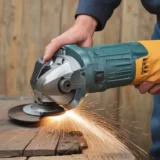Electrical Safety in the Workplace: Common Risks and How to Prevent Them
Introduction
Electricity powers almost every aspect of modern work—from powering tools and equipment to lighting job sites and buildings. But without proper precautions, it can also become a serious hazard. This post highlights common electrical risks in workplaces, especially in industrial and construction settings, and offers clear, practical steps to stay safe and compliant.
1. Why Electrical Safety Matters
Even minor contact with electricity can result in severe injuries such as burns, shocks, or worse. Electrical incidents can lead to costly downtime, injured workers, and compliance issues. Understanding the hazards and taking simple precautions protects your team and supports a stronger safety culture.
2. Common Electrical Risks in the Workplace
• Damaged Cords and Exposed Wiring
Frayed cables and exposed wiring are frequent causes of electrical shocks. Regular wear-and-tear, improper use, or accidental damage can compromise insulation and leave metal parts live.
• Misusing Extension Cords
While extension cords are handy, using them as permanent wiring, running them under carpets, or overloading them with high-powered tools can cause overheating and fire hazards.
• Overloaded Outlets
Plugging too many devices into a single outlet or power bar can lead to circuit overload. This increases the risk of short circuits, sparks, or fire.
• Lack of Proper Grounding
Equipment without adequate grounding allows stray current to travel through tools—or a worker—to the ground. This exposes employees to shock hazards.
• Proximity to Live Equipment
Working too close to energized parts—without turning power off first—can lead to accidental contact, especially in tight or cluttered workspaces.
3. How to Prevent Electrical Hazards
3.1 Regular Inspections & Maintenance
- Inspect cords and tools daily before use. Look for cuts, cracks, exposed wiring, or loose plugs.
- Repair or replace damaged gear immediately—don’t wait until the next site visit.
This aligns with principles from our post on Equipment Inspection & Safety, where routine checks are emphasized for preventing on-site injuries.
3.2 Smart Extension Cord Use
- Treat extension cords as temporary tools—never replace permanent wiring.
- Choose the right cord rating for the tool’s amperage, and never run cords through doorways, windows, or beneath rugs.
- Unplug and store cords properly at the end of each day.
3.3 Managing Outlets & Load
- Distribute power load across multiple circuits, especially for high-draw equipment.
- Consider adding dedicated circuits to prevent overloading and reduce fire risks.
3.4 Ensuring Proper Grounding
- Use three-prong plugs and don’t remove the grounding pin.
- Install Ground Fault Circuit Interrupters (GFCIs) in wet or damp environments to cut power quickly if current leakage is detected.
3.5 Safe Work Near Live Equipment
- Follow lockout/tagout (LOTO) procedures to completely shut off power before starting work.
- Maintain safe distances from live components, especially in confined spaces.
4. Roles and Responsibilities
- Employers must ensure that tools and wiring are safe, provide PPE, and train workers on hazards and procedures.
- Workers are responsible for inspecting their gear, following proper procedures, and reporting unsafe conditions.
This mirrors the structure in our guide on Developing Safe Job Procedures (SJP), where clear roles and responsibilities are broken down to prevent on-site risks.
5. Building a Safer Workplace Culture
- Keep records of inspections, repairs, and training sessions.
- Provide ongoing training on electrical risks, following the example of our Workplace Safety Training Services, which blends practical guidance with regulatory compliance.
- Encourage reporting of damaged cords or unsafe setups—saying nothing may lead to serious consequences.
When people feel empowered to speak up, risks are identified faster and incidents go down.
6. In Summary
Electrical hazards are among the most common and serious risks in industrial and construction environments. By regularly inspecting tools, using extension cords correctly, managing power loads, ensuring proper grounding, and following safe work procedures, you can minimize those risks.
Investing in training and safety systems isn’t just about compliance—it’s about looking out for your team and avoiding costly accidents.
Ready to Improve Electrical Safety on Your Site?
If you’d like help developing a tailored electrical safety plan, conducting jobsite inspections, or training your staff, Credence Group’s Occupational Health & Safety experts are here to help. Reach out today to find out how we can support your team.



